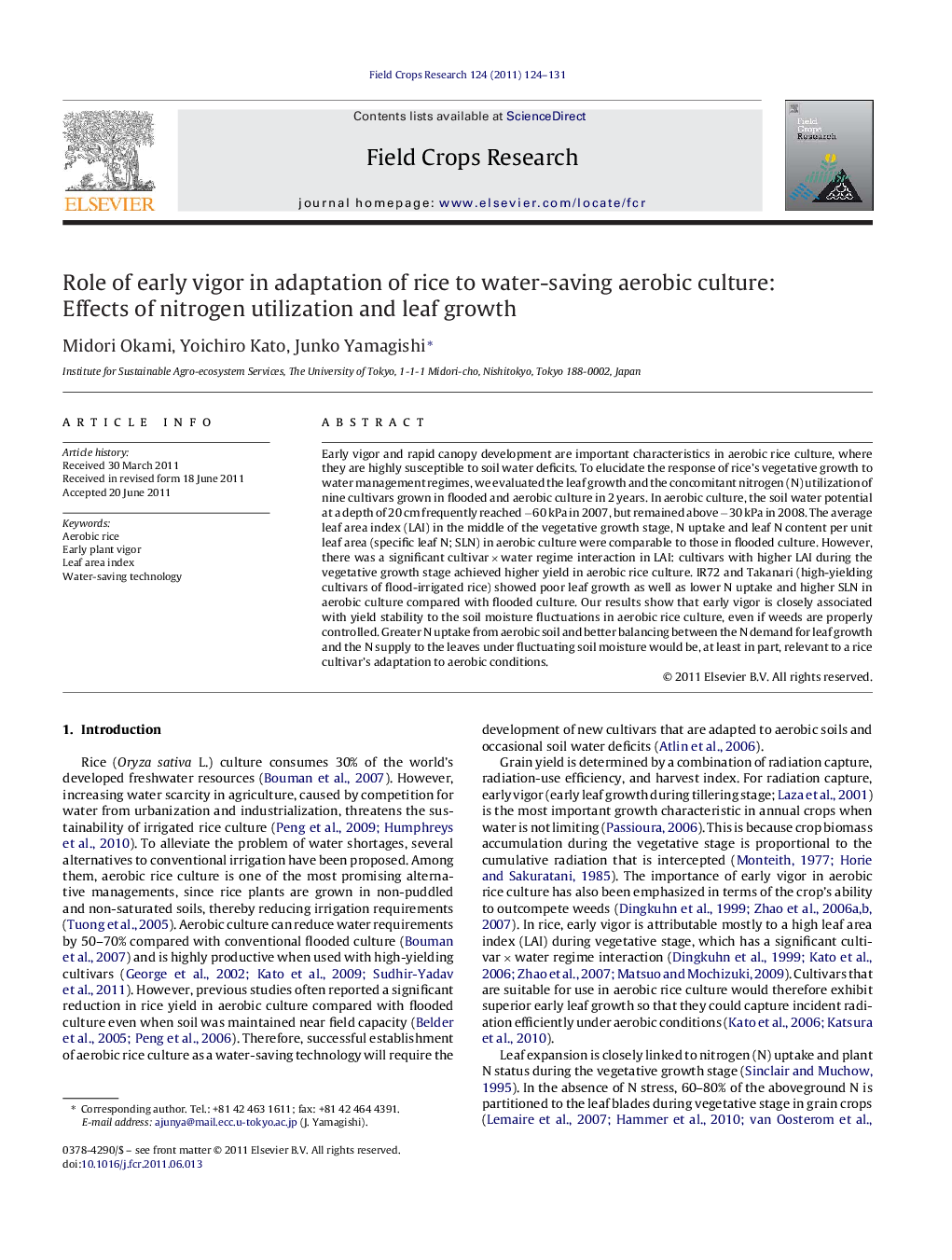| Article ID | Journal | Published Year | Pages | File Type |
|---|---|---|---|---|
| 4510643 | Field Crops Research | 2011 | 8 Pages |
Early vigor and rapid canopy development are important characteristics in aerobic rice culture, where they are highly susceptible to soil water deficits. To elucidate the response of rice's vegetative growth to water management regimes, we evaluated the leaf growth and the concomitant nitrogen (N) utilization of nine cultivars grown in flooded and aerobic culture in 2 years. In aerobic culture, the soil water potential at a depth of 20 cm frequently reached −60 kPa in 2007, but remained above −30 kPa in 2008. The average leaf area index (LAI) in the middle of the vegetative growth stage, N uptake and leaf N content per unit leaf area (specific leaf N; SLN) in aerobic culture were comparable to those in flooded culture. However, there was a significant cultivar × water regime interaction in LAI: cultivars with higher LAI during the vegetative growth stage achieved higher yield in aerobic rice culture. IR72 and Takanari (high-yielding cultivars of flood-irrigated rice) showed poor leaf growth as well as lower N uptake and higher SLN in aerobic culture compared with flooded culture. Our results show that early vigor is closely associated with yield stability to the soil moisture fluctuations in aerobic rice culture, even if weeds are properly controlled. Greater N uptake from aerobic soil and better balancing between the N demand for leaf growth and the N supply to the leaves under fluctuating soil moisture would be, at least in part, relevant to a rice cultivar's adaptation to aerobic conditions.
• Greater leaf expansion at vegetative stage helped yield stability in aerobic rice culture. • High-yielding cultivars did not always adapt to aerobic soil due to slow leaf growth. • Cultivar difference in LAI in aerobic culture was closely linked to those in N uptake and SLN. • Organogenetic response would have some part in early plant vigor in aerobic culture.
